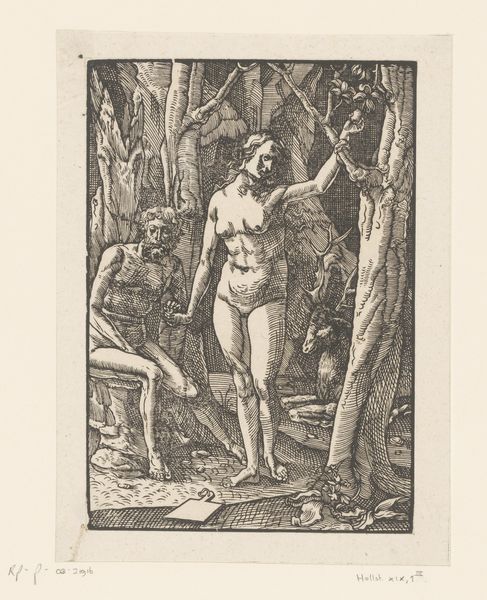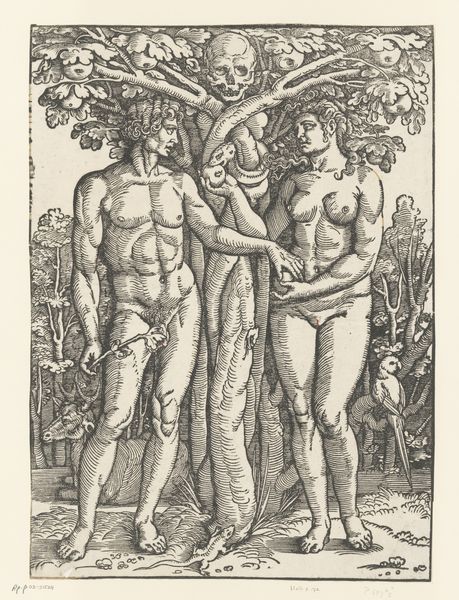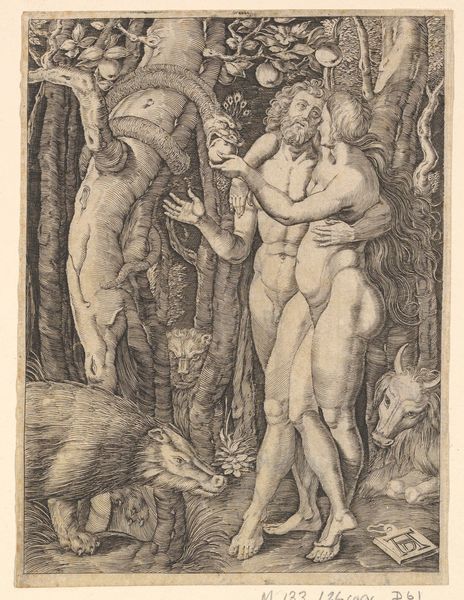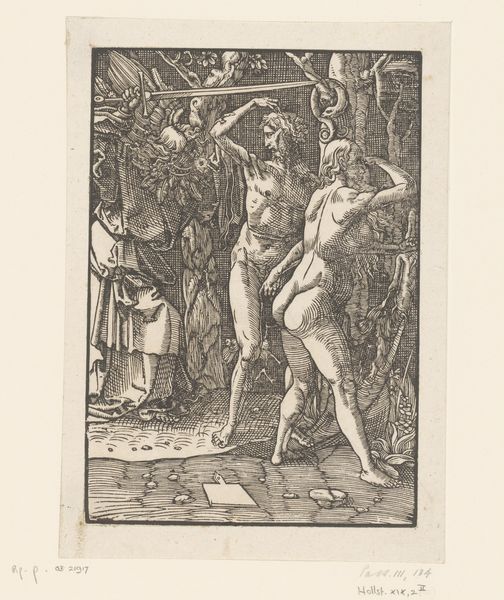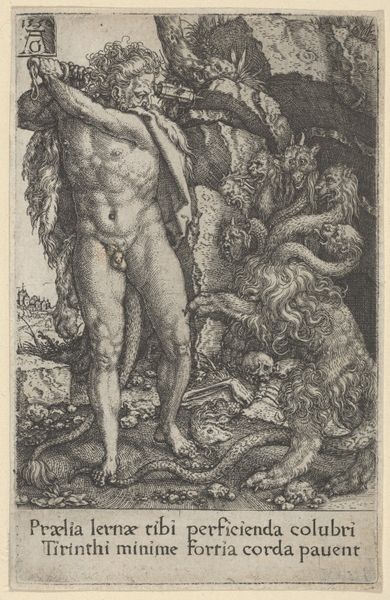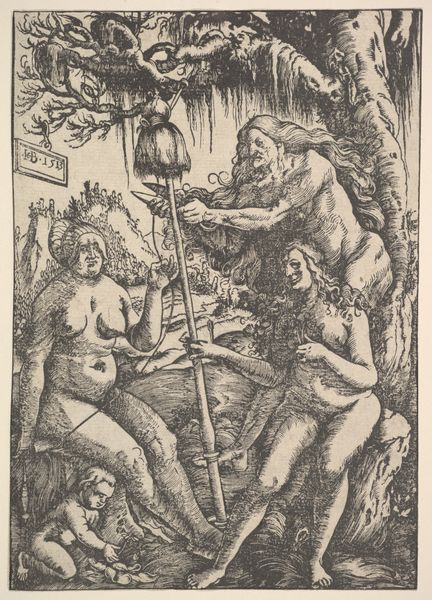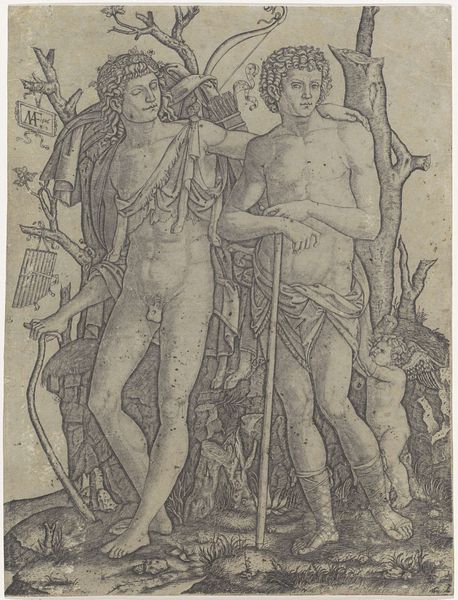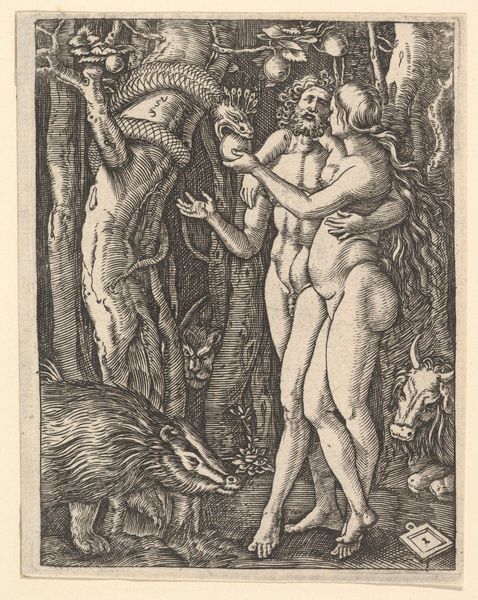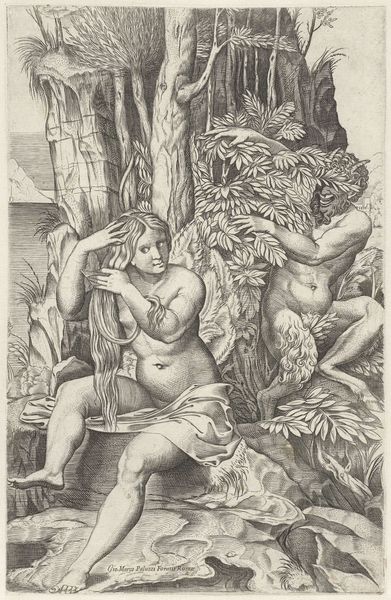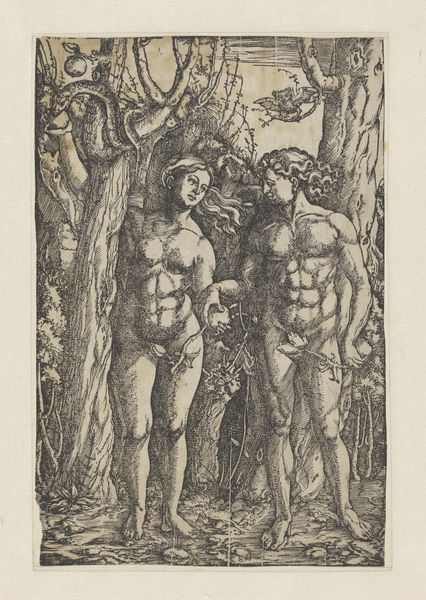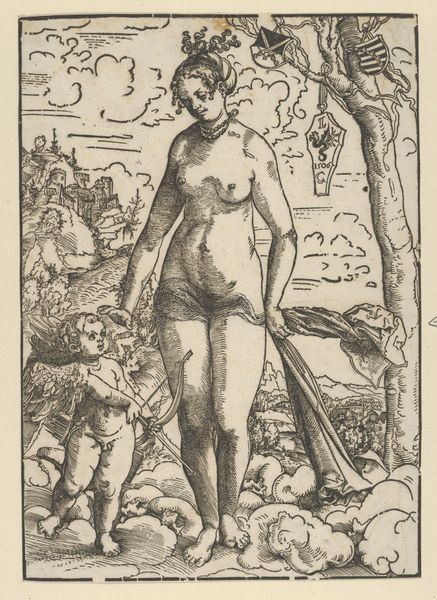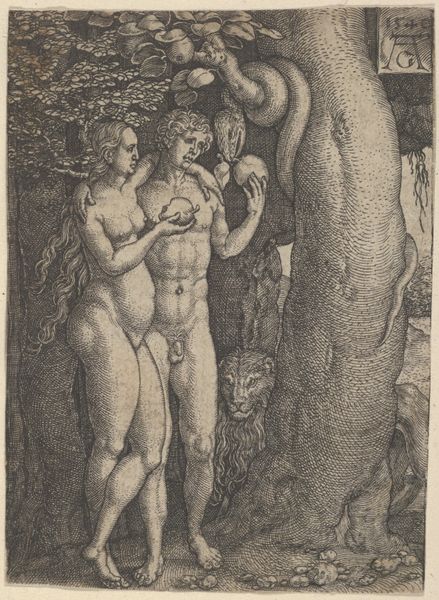
drawing, print, engraving
#
drawing
# print
#
figuration
#
11_renaissance
#
line
#
history-painting
#
northern-renaissance
#
nude
#
engraving
Dimensions: Sheet: 7 in. × 4 15/16 in. (17.8 × 12.6 cm)
Copyright: Public Domain
Curator: Brrrr. This engraving by Ludwig Krug titled *The Fall of Man* gives me the chills. The detail, it's almost oppressive! Editor: Oppressive, yes, that's it! A Garden of Eden gone goth. Look at all those stark lines; it’s as if every tree trunk is shouting its texture at me. And the figures, so tense... even their nakedness feels burdened. Curator: Indeed. Executed between 1508 and 1532, this piece from the Met’s collection reflects the Northern Renaissance fascination with both classical forms and the darker aspects of the human condition, rendered in a strikingly graphic style, all black and white, no holding back. Editor: It makes you wonder what Krug was thinking! Why this hyper-realism within a biblical scene? You’d think paradise would feel lighter, more airy. This… this is like paradise before the invention of central heating. And the stag lurking behind Eve—so still. Curator: I'd suggest that tension serves a very important function. Krug lived during the Reformation and made artwork in its midst. *The Fall of Man*, one of art history’s most iconic themes, speaks here to profound anxieties of his age, the human capacity for ruin as ever-present. The Fall is never far off! Editor: Anxieties, yes. Although perhaps less doom, more existential awareness? To render Adam and Eve with such... deliberation seems a comment on awareness. It makes you feel their mortality pressing in. Even the apple, offered so bluntly, lacks any seductive mystery! It is purely clinical, simply the evidence. Curator: Clinical, yes, perhaps. But also deeply moving, for it underscores that at the heart of their disobedience, they were individuals aware of making the choices. We have to feel their predicament on both intellectual and artistic registers, if it works, it also becomes personal! Editor: Looking at this piece, knowing what comes after, makes the decision more understandable. This isn't a moment of lighthearted temptation; this feels like something necessary, perhaps even tragically courageous. An odd reaction for something labelled "The Fall"! Curator: And for me, too, I feel the necessity for what art must become: truthful to itself. That honesty is itself enough, or the first thing.
Comments
No comments
Be the first to comment and join the conversation on the ultimate creative platform.
